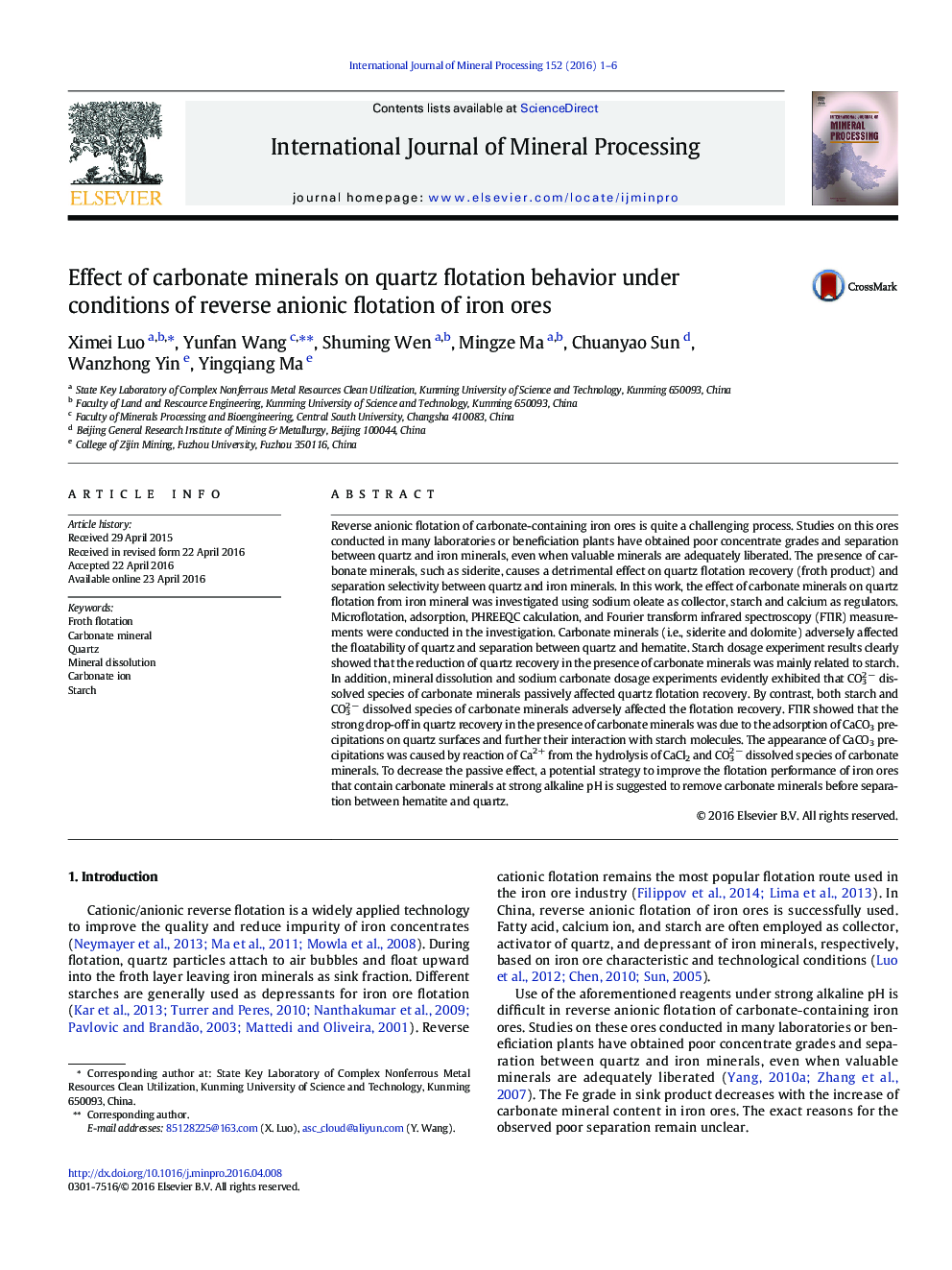| Article ID | Journal | Published Year | Pages | File Type |
|---|---|---|---|---|
| 213671 | International Journal of Mineral Processing | 2016 | 6 Pages |
•Siderite or dolomite adversely affects reverse flotation of hematite.•The effect of siderite is substantially greater than that of dolomite.•The quartz recovery in sink product increases with increasing carbonate percentage.•The drop-off in the quartz recovery is due to both starch and CO32 −.•Adsorption and FTIR studies support starch–quartz activated by calcium interaction.
Reverse anionic flotation of carbonate-containing iron ores is quite a challenging process. Studies on this ores conducted in many laboratories or beneficiation plants have obtained poor concentrate grades and separation between quartz and iron minerals, even when valuable minerals are adequately liberated. The presence of carbonate minerals, such as siderite, causes a detrimental effect on quartz flotation recovery (froth product) and separation selectivity between quartz and iron minerals. In this work, the effect of carbonate minerals on quartz flotation from iron mineral was investigated using sodium oleate as collector, starch and calcium as regulators. Microflotation, adsorption, PHREEQC calculation, and Fourier transform infrared spectroscopy (FTIR) measurements were conducted in the investigation. Carbonate minerals (i.e., siderite and dolomite) adversely affected the floatability of quartz and separation between quartz and hematite. Starch dosage experiment results clearly showed that the reduction of quartz recovery in the presence of carbonate minerals was mainly related to starch. In addition, mineral dissolution and sodium carbonate dosage experiments evidently exhibited that CO32 − dissolved species of carbonate minerals passively affected quartz flotation recovery. By contrast, both starch and CO32 − dissolved species of carbonate minerals adversely affected the flotation recovery. FTIR showed that the strong drop-off in quartz recovery in the presence of carbonate minerals was due to the adsorption of CaCO3 precipitations on quartz surfaces and further their interaction with starch molecules. The appearance of CaCO3 precipitations was caused by reaction of Ca2 + from the hydrolysis of CaCl2 and CO32 − dissolved species of carbonate minerals. To decrease the passive effect, a potential strategy to improve the flotation performance of iron ores that contain carbonate minerals at strong alkaline pH is suggested to remove carbonate minerals before separation between hematite and quartz.
